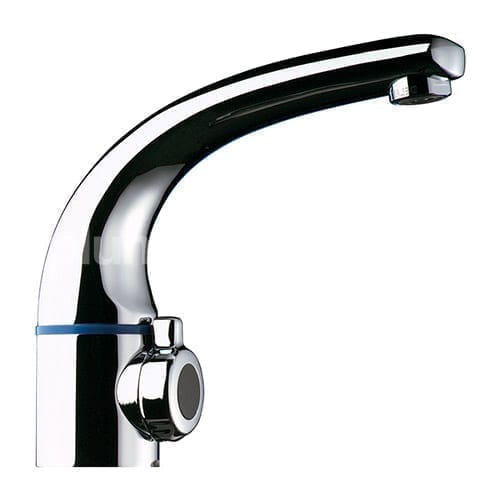Sensor taps are a technological miracle like place your hand under the spout and water starts flowing, amazing. But their inner workings rely on the different technologies, cleverly adapted to a tap spout.
1. Spout: Touchless tap spouts, which hold all the working parts, are made of zinc in cheaper models, while the high-end models are made of brass. They may be plated with nickel or chrome for durability and appearance.
There are different styles of spouts for standard washrooms. The spout also is where aesthetics come into play. The shape and finish of the taps’ spouts are major reasons buyers choose one touch taps over another.
They have four main key components behind their working: spout, sensor, solenoid-controlled valve, and power source.
2. Sensor: In touchless taps, the sensor positioned at the base of the tap spout. This is not a motion sensor, but its main work is to detect the presence of hands below the spout so as to turn the spout on.
Immediately as you remove your hand, it instructs the tap to close flows by turning off. In most of the tap sensors, you will find a tiny infrared light that is used to detect your presence and it submits the signal that helps to turn on the valve.
3. Solenoid-Controlled Valve: The tap sensor typically controls a solenoid-activated diaphragm valve. The solenoid is an electromagnet that can push or pull, depending on electric polarity. Diaphragm valves use a rubber-like disc to control water flow. The valve is normally held closed, but in response to a sensor signal that hands are present, the solenoid pulls the valve open so water can flow out the spout, then pushes the valve closed again when the sensor says the hands are gone.
4. Power Source: Each touchless tap needs a power source to work well. Although some models rely on power from the dry cells, others work with low voltage electric current drawn from an AC transformer.
One thing about battery powered taps is they work with latching solenoid valves that are able to hold on open without the need for additional electric current.
Discover more sensor taps in our wide range of products


